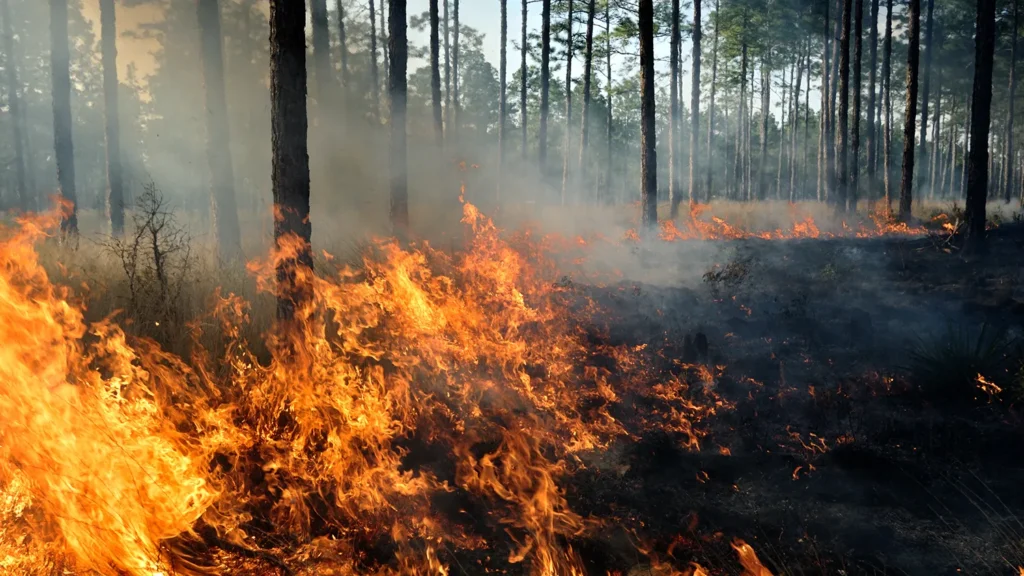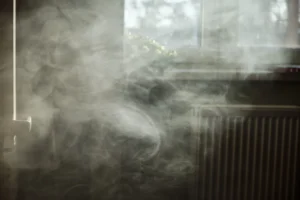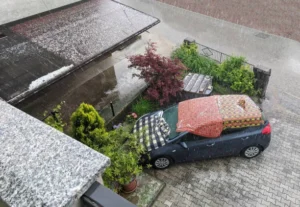Fire Damage Insurance isn’t just another line on your homeowners policy—it’s your financial lifeline when disaster strikes. In a state like Texas, where wildfires, power surges, and kitchen flare-ups are far too common, being underprepared can cost you everything. One moment you’re sautéing dinner, the next you’re watching flames race across your ceiling. The aftermath? Smoke-blackened walls, lost memories, and a long, complicated battle with your insurance company.
And here’s the truth no one likes to admit: even with fire damage insurance in place, getting a fair payout isn’t guaranteed.
At TX Public Adjusting, we’ve seen it all—from claims denied over technicalities to underpaid policies that leave families hanging. That’s why this guide is here. To help you understand what your policy covers, what it doesn’t, and how to take action when the fire’s out but the real fight begins. Let’s dig in.
What Fire Damage Insurance Really Covers
Most standard homeowners insurance policies include fire damage coverage. But the keyword here is “most.” And more importantly, the devil is in the details.
1. Dwelling Coverage
This is the big one. If a fire damages your roof, walls, floors, or anything structurally attached to your house—like a garage or a patio—your policy’s dwelling coverage kicks in. The payout can go toward rebuilding or repairing your home, but keep in mind, it’s based on policy limits. Not current construction costs. Not emotional value. Just policy math.
2. Other Structures
Got a detached garage, barn, or even a tool shed that caught fire? If your policy includes other structures coverage, it may help cover repairs or replacement. But this isn’t always included by default. At TX Public Adjusting, we’ve seen too many clients assume they were protected—only to find out they weren’t.
3. Personal Property
Everything inside your home—furniture, clothing, electronics, appliances, heirlooms, the works—falls under personal property coverage. This section of your fire damage insurance helps pay for repair or replacement, but again, it depends on limits. Some items, like jewelry, artwork, and collectibles, often come with “sub-limits.” That means you’ll only get a fraction of their actual value unless you opted for additional coverage.
4. Loss of Use (Additional Living Expenses)
What happens when your home is uninhabitable due to fire damage? You can’t exactly live in the garage. That’s when loss of use coverage steps in, paying for hotel stays, food, laundry, and other temporary living costs.
One TX Public Adjusting client in Katy, TX, ended up in a hotel for over three months after a kitchen fire gutted their home. Their insurance initially balked at paying more than 30 days of lodging. We fought back. They got the full three months plus dining expenses.
Hidden Exclusions That Burn the Hardest
Even with a policy in place, many Texas homeowners are blindsided by fire damage claim denials. Here’s why.
Intentional Fire
Set it yourself—even accidentally—and your claim is toast. Insurance only covers sudden and accidental losses, not negligence or fraud.
Negligence
Used a space heater you knew was defective? Left candles burning overnight? These things can void your fire damage insurance if your insurer decides you were grossly negligent.
Unoccupied Property
Leave your house vacant for 30–60 days without telling your insurer and you may void coverage altogether. TX Public Adjusting has helped clients push back on these kinds of denials, but it’s a tough battle without documentation and expert support.
Excluded Events
Texas insurance policies generally do not cover damage from war, nuclear hazards, or certain acts of nature unless you’ve added those explicitly. Always read the fine print—or have TX Public Adjusting do it for you.
Fire Insurance and Wildfires in Texas
Houston may be humid, but large parts of Texas are wildfire-prone. If you live near brushland or wooded areas, your fire risk is higher—and so are your chances of being denied coverage.

Some insurers refuse to cover fire damage in what they call “high-risk zones.” Others will only insure you through a surplus lines carrier or suggest you get a FAIR Plan (Fair Access to Insurance Requirements)—a last-resort option that’s available in Texas but often comes with limited protection and higher costs.
At TX Public Adjusting, we recommend reviewing your wildfire risk annually. If your property is flagged as high-risk, we can help you understand whether a surplus plan or private coverage makes more sense—and help you fight back if your claim is unfairly denied.
How to File a Fire Damage Insurance Claim (The Smart Way)
Getting your claim approved is about more than just calling your insurance company. Here’s the TX Public Adjusting fire claim checklist to follow after the flames go out:
Call 911 and Get a Fire Report
Emergency responders will file official documentation. You’ll need it for your claim.
Document Everything
Take videos and photos of every room, charred wall, broken fixture, and burned belonging. Make a list. Save receipts for temporary living costs.
File Promptly
You can file online, by phone, or through an app. But don’t delay—some policies have strict deadlines.
Meet the Adjuster (with an Expert by Your Side)
The insurance company sends someone to assess your damage. They work for them. TX Public Adjusting works for you. Don’t go into that meeting alone.
Stay Responsive
Insurers love delays. Answer questions, return calls, and stay ahead of the paper trail. Better yet—let us handle that while you get your life back.
When Fire Claims Get Denied
Unfortunately, insurance companies in Texas can and do deny legitimate fire damage claims. Sometimes it’s technical. Other times, it’s tactics.
Here are common reasons we’ve seen:
- Accusing the policyholder of arson without solid evidence
- Delaying inspection until mold or further damage occurs
- Undervaluing contents based on depreciation
- Denying claims due to minor policy violations
- Claiming the damage isn’t “directly” from fire (like smoke or water damage)
That’s where TX Public Adjusting shines. We’ve overturned dozens of denied fire claims and recovered full payouts for policyholders across Houston, Dallas, Austin, and beyond. We coordinate with independent loss adjusters, document everything, and push for what’s actually owed.
Fire Damage Insurance for Commercial Properties
If you own a business or investment property in Texas, your commercial insurance policy may have different rules.
Offices, retail stores, and warehouses all carry specific fire risks. And depending on your operations, your insurance may include—or exclude—fire-related losses. For example, some policies cover only direct flame damage, ignoring smoke or water cleanup. Others may exclude contents altogether unless scheduled separately.
Don’t guess. Let TX Public Adjusting review your commercial fire policy before you file.
How Much Does Fire Insurance Cost?
Here’s the good news: most homeowners in Houston don’t pay extra for fire insurance. It’s part of your standard premium—unless you’re in a high-risk wildfire area, in which case your carrier may require a separate endorsement or offer a more expensive policy.
Your premium depends on:
- Location (wildfire zones, city vs. rural)
- Building materials and age
- Fire department proximity
- Previous claims history
- Coverage limits and add-ons
We recommend reviewing your policy annually and reassessing your property’s value. If you’re underinsured, a fire could cost you more than just your deductible.
Pro Tips to Fireproof Your Claim (and Home)
- Install smoke detectors in every room. Test them monthly.
- Keep fire extinguishers easily accessible.
- Maintain electrical systems and avoid overloading outlets.
- Have a fire escape plan—especially with kids or pets.
- Document belongings in a home inventory app or spreadsheet (photos, receipts, serial numbers).
- Talk to a public adjuster before, during, or after a claim.
Frequently Asked Questions (FAQs)
Fire damage insurance typically covers your home’s structure, personal belongings, detached structures, and temporary living expenses.
It depends on your policy. Many Texas homeowners policies include wildfire damage, but some may require special endorsements or offer limited coverage.
You can appeal the denial. Working with a public adjuster like TX Public Adjusting helps strengthen your case and fight for the full value of your claim.
Yes, most policies cover smoke and water damage resulting directly from the fire, though specific exclusions may apply. Always review your policy details.
Each policy has its own deadline, but generally, it’s best to file as soon as possible—ideally within days of the fire event.
Yes, but it may require a special policy, a FAIR Plan, or coverage through a surplus lines insurer. TX Public Adjusting can help navigate these options.
Call 911, secure the area, document damages with photos/videos, gather receipts, and contact TX Public Adjusting before speaking with your insurer.
Conclusion: Get TX Public Adjusting in Your Corner
Fire damage is traumatic. Fighting your insurance company doesn’t have to be. At TX Public Adjusting, we represent you—not the insurer. From documenting your losses to negotiating your payout, we help Texas families and businesses recover faster, smarter, and more completely.
If your fire damage insurance claim was denied, underpaid, or you don’t know where to start, contact us today. We’re here to make sure you get what you paid for—because in Texas, smoke may clear fast, but damage lingers without the right team by your side.







